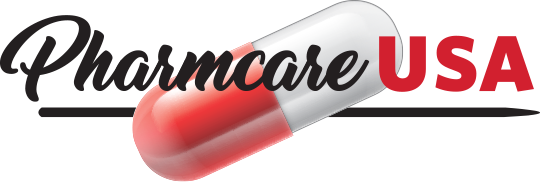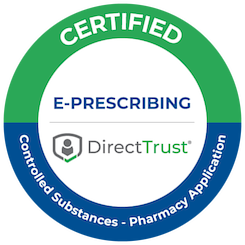Introduction to LTPAC and its Importance in Long Term Care
Long-Term Post-Acute Care (LTPAC) is an integral part of the healthcare system, focusing on providing care for individuals who require assistance with daily tasks over an extended period. This care can be provided in various settings, such as skilled nursing facilities, assisted living communities, or even the patient’s home. The need for long-term care is expected to grow exponentially with the aging population, thus making the role of LTPAC increasingly critical.
The significance of LTPAC in long term care cannot be overstated. It forms a critical bridge between the acute care provided in a hospital and the ongoing care needed by those with chronic conditions or disabilities. LTPAC ensures that individuals receive the appropriate level of care, in the appropriate setting, at the right time. This not only improves patient outcomes but also helps to reduce the burden on the broader healthcare system.
However, managing the complex needs of long-term care patients can be challenging. This is where LTPAC software comes into play. It streamlines operations, improves care coordination, and enhances patient outcomes, thus revolutionizing the way long term care is delivered.
Understanding LTPAC Software: What is it and how does it work?
LTPAC software is a technological solution designed to manage the diverse and complex needs of long-term care patients. It is a comprehensive system that integrates multiple aspects of patient care, including admission, care planning, medication management, and discharge planning. But what is LTPAC software, and how does it work?
At its core, LTPAC software is a digital tool that helps providers manage their operations more efficiently and effectively. It automates many of the routine tasks associated with patient care, such as tracking medication schedules, monitoring patient progress, and coordinating care among various providers. By doing so, it frees up valuable time for healthcare professionals to focus on what matters most – providing high-quality care to their patients.
More than just a digital tool, LTPAC software is a critical component of a broader strategy to improve long term care. By leveraging the power of technology, it enables providers to deliver more personalized, efficient, and effective care. This not only improves patient outcomes but also helps to reduce the overall cost of care.
The Role of LTPAC Software in Assisted Living Facilities
Assisted living facilities provide a vital service for those who need assistance with daily living activities but still want to maintain a level of independence. These facilities often cater to a diverse range of needs, making the management of care a complex task. This is where LTPAC software can make a significant difference.
One of the key roles of LTPAC software in assisted living facilities is streamlining the management of resident care. With the software, facilities can easily track and monitor the health status of each resident, plan care interventions, and coordinate with other healthcare providers. This leads to improved resident outcomes and better overall care.
In addition to improving resident care, LTPAC software also enhances operational efficiency in assisted living facilities. It automates many of the routine tasks associated with running a facility, such as scheduling staff, managing finances, and keeping track of regulatory compliance. This allows facilities to operate more efficiently and effectively, ultimately improving the quality of care delivered to residents.
How LTPAC Software Streamlines Medication Management
Medication management is a critical component of long-term care. Ensuring that patients receive the right medications at the right time can significantly improve their health outcomes. However, managing medications can be complex, particularly for patients with multiple chronic conditions. This is where LTPAC software comes in.
One of the key ways that LTPAC software streamlines medication management is by automating the process. The software can track medication schedules, send reminders when it’s time for a dose, and alert healthcare providers if a dose is missed. This not only ensures that patients receive their medications on time but also reduces the risk of medication errors.
In addition, LTPAC software can also help to improve medication adherence. It can provide patients with information about their medications, including why they are being taken and what side effects to watch out for. This can help to increase patient understanding and engagement, ultimately leading to better medication adherence and improved health outcomes.
The Impact of Post Acute Software on Elderly Care
Post acute software is another crucial component of the LTPAC software suite. This software is designed to manage the care of patients after they have been discharged from an acute care setting, such as a hospital. It plays a critical role in elderly care, helping to ensure that older adults receive the care they need to recover and regain their independence.
One of the most significant ways that post acute software impacts elderly care is by improving care coordination. The software allows healthcare providers to easily share information and collaborate on patient care. This ensures that everyone involved in a patient’s care is on the same page, reducing the risk of miscommunication and improving patient outcomes.
In addition to improving care coordination, post acute software also helps to streamline operations in elderly care facilities. It automates many of the routine tasks associated with managing patient care, such as scheduling appointments, tracking patient progress, and managing medications. This frees up valuable time for healthcare providers to focus on providing high-quality care to their patients.
The Significance of LTPAC in Skilled Nursing Facilities
Skilled nursing facilities provide care for individuals who require a higher level of medical attention than can be provided in an assisted living or home care setting. These facilities often cater to patients with complex medical needs, making the role of LTPAC software particularly critical.
LTPAC software helps to streamline operations in skilled nursing facilities in several ways. First, it automates many of the routine tasks associated with patient care, such as tracking medication schedules, monitoring patient progress, and coordinating care among various providers. This not only improves patient outcomes but also helps to reduce the overall cost of care.
In addition, LTPAC software also enhances the quality of care delivered in skilled nursing facilities. It allows providers to easily track and monitor patient health, plan care interventions, and coordinate with other healthcare providers. By doing so, it ensures that patients receive the appropriate level of care, in the appropriate setting, at the right time.
LTPAC and EMR: Revolutionizing Long Term Care
LTPAC software and Electronic Medical Records (EMR) are two technologies that are revolutionizing long term care. EMR is a digital version of a patient’s paper chart that contains all of their medical history. When combined with LTPAC software, these technologies can significantly enhance the delivery of long term care.
One of the key ways that LTPAC and EMR are revolutionizing long term care is by improving care coordination. With these technologies, healthcare providers can easily share and access patient information. This ensures that everyone involved in a patient’s care is on the same page, reducing the risk of miscommunication and improving patient outcomes.
In addition to improving care coordination, LTPAC and EMR also enhance the efficiency of long term care operations. They automate many of the routine tasks associated with patient care, freeing up valuable time for healthcare providers to focus on what matters most – providing high-quality care to their patients.
Why do You need LTPAC Software?
The benefits of LTPAC software are numerous and wide-ranging. From streamlining operations to improving patient outcomes, LTPAC software is a critical tool for any long-term care provider.
One of the key reasons you need LTPAC software is to improve operational efficiency. Managing the care of long-term patients can be complex and time-consuming. LTPAC software automates many of these tasks, freeing up valuable time for healthcare providers to focus on patient care.
In addition, LTPAC software also enhances the quality of care. It allows providers to easily track and monitor patient health, plan care interventions, and coordinate care among various providers. This not only improves patient outcomes but also helps to reduce the overall cost of care.
Avoiding Errors using LTPAC Software in Skilled Nursing Environments
In the skilled nursing environment, errors can have serious consequences. Whether it’s a missed medication or a miscommunication between healthcare providers, errors can lead to adverse patient outcomes. This is where LTPAC software can make a significant difference.
LTPAC software helps to reduce errors in several ways. First, it automates many of the routine tasks associated with patient care, such as tracking medication schedules and monitoring patient progress. This not only reduces the risk of errors but also ensures that patients receive the care they need when they need it.
In addition, LTPAC software also improves communication among healthcare providers. It allows providers to easily share and access patient information, ensuring that everyone involved in a patient’s care is on the same page. This reduces the risk of miscommunication and helps to improve patient outcomes.
Case Study: Successful Implementation of LTPAC Software
The benefits of LTPAC software are not just theoretical – they have been proven in practice. One example of this is the successful implementation of LTPAC software in a large skilled nursing facility.
The facility was struggling with operational inefficiencies and poor patient outcomes. After implementing LTPAC software, they saw significant improvements. The software streamlined operations, improved care coordination, and enhanced patient outcomes. Staff reported that they were able to spend more time with patients, and patient satisfaction scores increased.
This case study is just one example of the many ways that LTPAC software can revolutionize long term care. From improving operational efficiency to enhancing patient outcomes, LTPAC software is a critical tool for any long-term care provider.
Conclusion and Future of LTPAC in Long Term Care Operations
The future of LTPAC in long term care operations is bright. As the need for long term care continues to grow, the role of LTPAC software will only become more critical.
LTPAC software is revolutionizing long term care, delivering benefits that extend beyond operational efficiency. It enhances patient outcomes, reduces the cost of care, and improves the overall quality of care. As technology continues to advance, the capabilities of LTPAC software are likely to expand, further enhancing its impact on long term care.
As a long-term care provider, adopting LTPAC software is not just a smart business decision – it’s a decision that can dramatically improve the lives of the patients you serve. Pharmcare USA offers innovative solutions for long term care, assisted living, and skilled nursing facilities to enhance their quality of care through software, consulting, and more. Explore their solutions today and discover how they can help you revolutionize your long term care operations.




